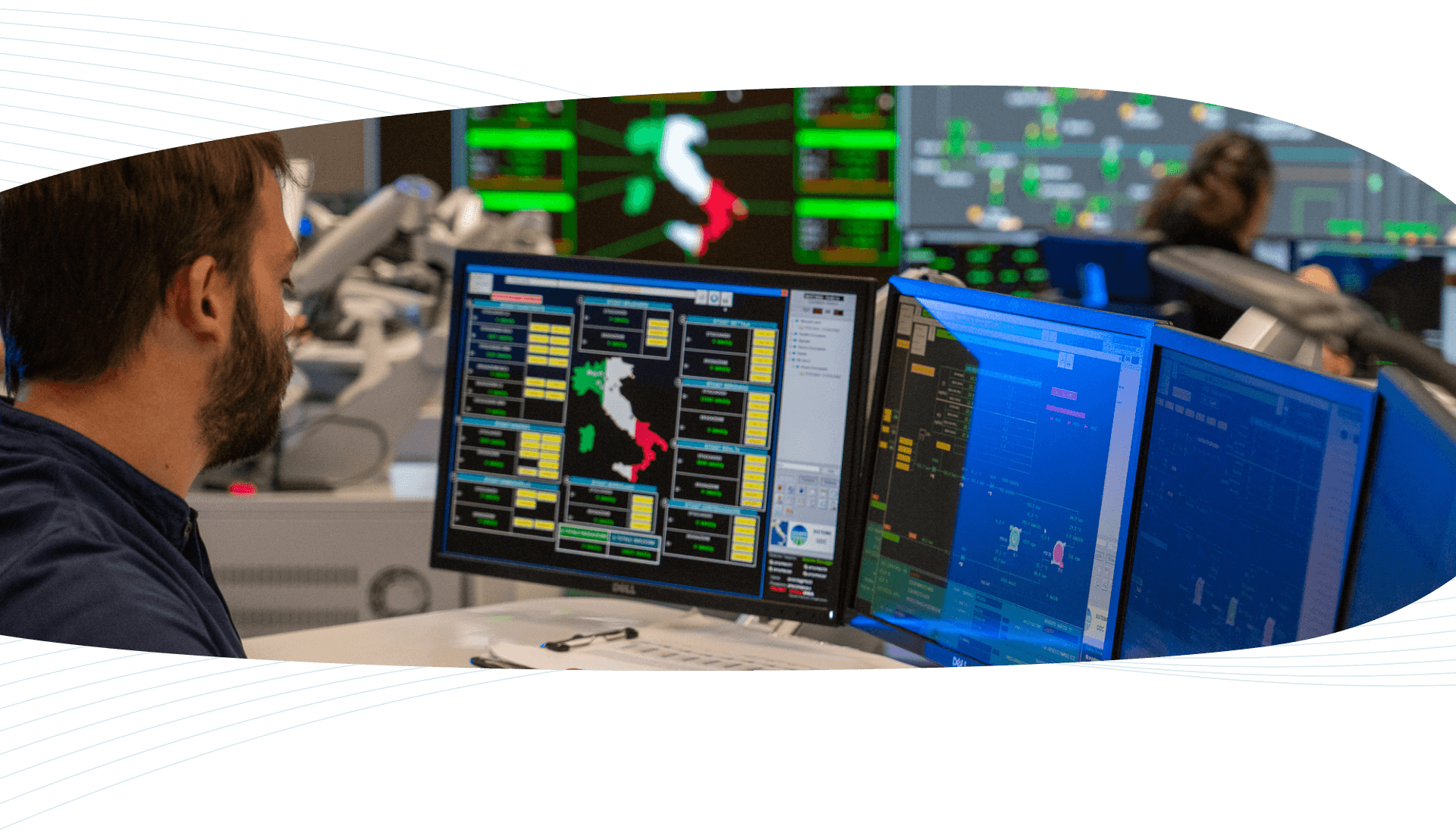Designing
the future
Snam has set out its 2023-2027 Strategic Plan, which highlights its distinctive characteristics as a strategic player for the realisation of a secure and fully sustainable energy transition

2023-2027 Strategic Plan
Snam’s 80 years of technical and engineering experience and its role as a transportation system operator at the forefront of innovation and the development of programmes in favour of the spread of hydrogen make it one of the companies best placed to make a significant and successful contribution to the energy transition against a backdrop of ongoing consolidation of supply security.
Snam has progressively integrated the energy transition businesses with those of the regulated sector, to the point of making them synergic and interconnected, with the aim of creating a multi-molecule pan-European infrastructure that ensures energy security at national and European level, guaranteeing diversified supplies over the long term.
In order to achieve this ambitious goal, Snam plans to invest €11.5 billion over the Plan time horizon (+15% compared to the 2022-2026 Plan) earmarked for the gas infrastructure business - transportation, storage and regasification - and the energy transition platform - biomethane, CCS, hydrogen and energy efficiency. 37% of these investments will be aligned with the EU Taxonomy and 58% of them are aligned with the SDGs.

Investments are aligned with the Taxonomy and the Sustainable Development Goals as follows:
- Enhancement of the Adriatic Backbone;
- Replacement of more than 900km of network;
- Construction of dual fuel compressor stations with a view to Net Zero;
- Commissioning of the Ravenna FSRU and relocation of the Piombino FSRU;
- Grid connection of FSRUs and biomethane plants;
- Enhancement and optimisation of the storage and export system;
- Development of small-scale LNG;
- Expansion of networks of LNG-bio-GNG and, in future, hydrogen stations.

Sustainable finance and SDG investments
In 2018, Snam began to align its financial strategy with the Group's sustainability objectives to consolidate its role in the energy transition, attract diversified investors and promote ESG initiatives. This commitment was also reflected in the setting of a target to increase the weight of sustainable finance in total funding to 80% by 2026, achieved in 2023 three years early. The target was raised to 85% by 2027 in the 2023-2027 Strategic Plan.
Sustainable Finance Framework 2024
Significant developments in the sustainable finance markets and the recent macroeconomic and geopolitical changes have underlined that the path undertaken by Snam is the right one, leading to further commitments and, in particular, the new Sustainable Finance Framework, published in February 2024. The Framework will guide the Group's financial strategy, enabling it to issue green (use of proceeds) and sustainability-linked financial instruments.
Going beyond the previous the EU Taxonomy-aligned Transition format, it increases the focus on low-carbon infrastructure and includes additional project categories (such as carbon capture and storage – CCS, among others), all of which are selected in accordance with the EU Taxonomy criteria.
They represent any type of instrument for which the economic performance changes depending on whether or not the issuer achieves pre-defined sustainability performance targets by a certain date. In line with its Sustainability Strategy, Snam has selected 4 KPIs: Reduction in natural gas emissions; Reduction in greenhouse gas Scope 1 and 2 emissions; Reduction in Scope 3 emissions; Women in executive and management positions.
European Taxonomy applied to Snam
Since the first developments of the European Taxonomy, Snam has welcomed the direction defined by the European Commission, in line with the strategy and investment choices of the Company, aimed at decarbonisation and the creation of a low-carbon economy.
innovation
and principles
